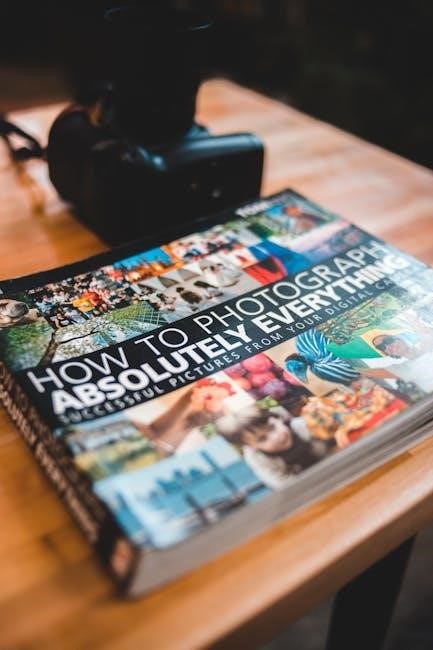Survey of Historic Costume 7th Edition: Overview
The seventh edition offers an exploration into Western dress‚ spanning from ancient times to the present‚ with a focus on social and cultural influences. It helps understand the diverse role of clothing.
The “Survey of Historic Costume‚” now in its seventh edition‚ stands as a comprehensive guide to understanding the evolution of Western dress. Going beyond mere aesthetics‚ this textbook delves into the rich tapestry of social‚ cultural‚ environmental‚ and artistic influences that have shaped what people wore throughout history. From the ancient world to contemporary fashion‚ each chapter unravels the intricate connections between clothing and the societies that created them.
It examines recurring themes and concepts while providing a global perspective on dress. The textbook serves as an invaluable resource for students‚ researchers‚ and anyone with a keen interest in the history of fashion. Explore the transformative power of dress as a reflection of identity‚ status‚ and cultural values.
Authors: Phyllis G. Tortora and Sara B. Marcketti
The “Survey of Historic Costume‚” 7th Edition‚ is brought to life through the combined expertise of Phyllis G. Tortora and Sara B. Marcketti‚ esteemed scholars in the field of costume history. Phyllis G. Tortora’s extensive knowledge and research in the area of textiles and clothing provide a solid foundation for the book’s historical accuracy and depth.
Sara B. Marcketti’s contributions enhance the book’s relevance‚ incorporating contemporary perspectives on fashion and its cultural significance. Together‚ Tortora and Marcketti create a comprehensive and engaging exploration of Western dress‚ making it accessible to students and enthusiasts. Their collaborative effort brings a wealth of knowledge to the subject matter.
Publisher: Fairchild Books
“Survey of Historic Costume‚” 7th Edition‚ is proudly published by Fairchild Books‚ a leading name in educational resources for the fashion‚ design‚ and retail industries. Fairchild Books is known for its commitment to providing high-quality‚ visually engaging‚ and academically sound textbooks that cater to the needs of students and professionals alike.
As the publisher of this comprehensive survey‚ Fairchild Books ensures that the content is meticulously researched‚ thoughtfully presented‚ and aligned with the curriculum standards of fashion history courses. With its reputation for excellence and dedication to the field‚ Fairchild Books is the perfect partner for Tortora and Marcketti’s exploration of Western dress‚ making it accessible to students and enthusiasts.

Key Features of the 7th Edition
The seventh edition of “Survey of Historic Costume” features updated content‚ vibrant imagery‚ and a comprehensive analysis of Western dress history from ancient times to the present day.
Focus on Western Dress History
The “Survey of Historic Costume‚ 7th Edition” presents a detailed examination of Western dress‚ tracing its evolution from ancient civilizations to contemporary fashion trends. The book meticulously analyzes various garments‚ textiles‚ and accessories that have shaped Western sartorial traditions over centuries. It examines the influences that have shaped Western clothing.
Emphasis is placed on understanding the social‚ cultural‚ and economic contexts that influenced dress practices in different eras. The book examines how these elements have shaped Western fashion.
Readers gain insights into the recurring themes and concepts that have defined Western dress‚ such as status‚ gender‚ and identity. Each chapter provides a focused look at a specific period‚ highlighting key styles‚ materials‚ and design elements. Historical context is provided.
The book serves as a comprehensive resource for students‚ researchers‚ and anyone interested in the rich history of Western clothing.
Social‚ Cultural‚ and Environmental Influences
The seventh edition emphasizes the profound impact of social‚ cultural‚ and environmental factors on the evolution of Western dress. Each chapter carefully analyzes how these influences have shaped clothing styles‚ materials‚ and adornments throughout history. It showcases the influences on dress practices.
The book explores how social hierarchies‚ religious beliefs‚ and cultural values have dictated dress codes and fashion trends. It examines how these factors influenced clothing.
Furthermore‚ the book highlights the role of environmental conditions in determining the types of materials used and the functionality of garments. It showcases how climate influenced garment making.
By examining these interconnected elements‚ the book offers a comprehensive understanding of how dress reflects and shapes societies.
The text provides a global perspective‚ acknowledging the interactions between Western and non-Western cultures in the exchange of fashion ideas. It showcases the global exchange in fashion.
Over 600 Images
The seventh edition features a rich collection of over 600 images. These visuals offer a comprehensive and engaging exploration of Western dress through the ages. The images showcase fashion evolution.
These photographs‚ illustrations‚ and historical paintings are carefully selected to complement the text‚ providing visual evidence of the styles‚ textiles‚ and accessories. The images support the text.
The images allow readers to closely examine the details of garments. It assists to identify the nuances of different eras.
The illustrations help to clarify construction techniques and design elements. The drawings assist in design understanding.
The inclusion of a diverse range of visual resources allows for a deeper appreciation of the artistry and craftsmanship involved in the creation of historic clothing. The diverse images aid comprehension.
This extensive visual archive enhances the learning experience‚ making the study of costume history both informative and visually stimulating‚ making the book more comprehensive.

Content and Scope
The book provides comprehensive coverage of Western dress history‚ tracing its evolution from the ancient world to contemporary fashion. It explores social‚ cultural‚ and artistic influences on clothing.
Coverage from the Ancient World to Today
The 7th edition of “Survey of Historic Costume” presents a comprehensive and detailed exploration of Western dress‚ meticulously tracing its evolution from the ancient world to the contemporary era. This expansive coverage ensures readers gain a thorough understanding of how clothing styles have transformed across millennia‚ influenced by a myriad of factors.
Each chapter delves into specific periods‚ examining the social‚ cultural‚ environmental‚ and artistic forces that shaped the attire of the time. By exploring these influences‚ the book provides valuable context for understanding the motivations and meanings behind historical fashion choices.
From the draped garments of ancient civilizations to the innovative designs of modern couture‚ the book offers insights into the key developments and trends that have defined Western dress. Readers will discover the origins of iconic styles‚ the impact of technological advancements‚ and the role of fashion in reflecting and shaping societal norms.
Furthermore‚ the text incorporates visual aids‚ with over 600 images‚ to help readers visualize and analyze the evolution of clothing styles throughout history. This combination of textual analysis and visual representation makes the learning experience engaging and informative.
Recurring Themes and Concepts
Throughout the “Survey of Historic Costume‚” the seventh edition emphasizes recurring themes and concepts that underpin the evolution of Western dress. These themes provide a framework for understanding the historical trajectory of fashion and its connection to broader social and cultural contexts.
One prominent theme is the interplay between tradition and innovation. The book explores how designers and individuals have consistently drawn upon historical precedents while simultaneously pushing the boundaries of creativity and technology.
Another recurring concept is the influence of social status and identity on clothing choices. The text examines how dress has been used to signal wealth‚ power‚ occupation‚ and personal beliefs throughout history.
The book also highlights the role of cultural exchange and globalization in shaping fashion trends. It demonstrates how the interaction between different cultures has led to the fusion of styles and the adoption of new materials and techniques.
Additionally‚ the text explores the relationship between fashion and the body‚ examining how clothing has been used to shape‚ enhance‚ and conceal the human form. It investigates the impact of changing ideals of beauty and the role of dress in constructing gender identities.
By focusing on these recurring themes‚ the “Survey of Historic Costume” enables readers to develop a deeper appreciation for the complexities of fashion history.
Global Perspective on Dress
The seventh edition broadens its scope to incorporate a global perspective on dress‚ acknowledging the interconnectedness of fashion trends and cultural influences across different regions. By moving beyond a purely Eurocentric viewpoint‚ the book provides a more comprehensive understanding of the world of clothing.
The text explores how various cultures have contributed to the evolution of fashion‚ highlighting the exchange of materials‚ techniques‚ and styles between different societies. It examines how indigenous clothing traditions have influenced Western designs and vice versa.
The book also addresses the impact of colonialism and globalization on dress practices‚ analyzing how Western fashion has been adopted‚ adapted‚ and resisted in different parts of the world. It also looks at how non-Western garments have been reinterpreted in Western fashion.
Furthermore‚ the text recognizes the diversity of dress within individual societies‚ acknowledging the role of ethnicity‚ religion‚ and social class in shaping clothing choices.
By adopting a global perspective‚ the “Survey of Historic Costume” encourages readers to appreciate the richness and complexity of dress traditions around the world. It emphasizes the importance of understanding the cultural context in which clothing is created and worn‚ helping readers develop a more nuanced and informed view of fashion history. It is an important step towards inclusivity.

Availability and Access
The textbook is available in both digital and print formats‚ including an eBook (PDF) version. Check online retailers and bookstores for purchase or rental options‚ ensuring easy access.
Digital and Print Editions

The “Survey of Historic Costume‚” 7th Edition‚ caters to diverse learning preferences by offering both digital and print editions. The print edition provides a traditional tactile experience‚ favored by students who appreciate the feel of a physical book and the ability to make annotations directly on the pages. This format is ideal for in-depth study and reference.
Conversely‚ the digital edition‚ often available as an eBook (PDF)‚ offers portability and convenience. Students can access the textbook on various devices‚ such as laptops‚ tablets‚ and smartphones‚ enabling study on the go. Digital editions often include features like searchable text‚ embedded multimedia‚ and interactive elements‚ enhancing the learning experience.
The choice between digital and print editions depends on individual learning styles and preferences. Some students may opt for the print edition for its familiarity and ease of use‚ while others may prefer the digital edition for its accessibility and interactive features. Regardless of the format chosen‚ the content remains consistent‚ ensuring that all students have access to the same comprehensive information on Western dress history.
eBook (PDF) and Other Formats
The digital version of the “Survey of Historic Costume‚” 7th Edition‚ is commonly available as an eBook in PDF format‚ offering a convenient and accessible alternative to the traditional print edition. The PDF format allows for easy viewing on various devices‚ including computers‚ tablets‚ and smartphones‚ making it ideal for students who prefer studying on the go.
In addition to PDF‚ the eBook may also be available in other formats such as EPUB and MOBI‚ which are optimized for e-readers and offer features like adjustable font sizes and reflowable text. These formats enhance the reading experience on smaller screens and allow for greater customization.
The availability of multiple digital formats ensures that students can choose the option that best suits their device and reading preferences. Whether it’s the widely compatible PDF or the e-reader-friendly EPUB and MOBI‚ the digital edition provides a flexible and convenient way to access the textbook’s comprehensive coverage of Western dress history. Furthermore‚ some platforms may offer online access through a web browser.
Where to Buy or Rent
The “Survey of Historic Costume‚” 7th Edition‚ is readily available for purchase or rent from a variety of sources‚ catering to different student needs and budgets. Major online retailers such as Amazon and Barnes & Noble offer both new and used copies‚ as well as digital versions in formats like PDF. University bookstores often stock the textbook‚ providing a convenient option for students attending traditional brick-and-mortar institutions.
For those seeking more affordable options‚ rental services like Chegg and VitalSource offer temporary access to the digital edition‚ allowing students to save money while still having access to the required material. Additionally‚ some websites specialize in selling used textbooks‚ providing another avenue for finding discounted copies.
It’s also worth checking with library services‚ both at universities and in local communities‚ as they may have copies available for borrowing. Comparing prices and options across different retailers and rental services can help students find the most cost-effective way to acquire the “Survey of Historic Costume‚” 7th Edition‚ whether they prefer a physical copy or a digital version.

























